John P. Eberhard Student Design Competition
Student Design Competition Winners Announced!
Over 170 students from 30 schools across 14 countries registered, presenting designs that push traditional architectural boundaries. A panel of seven experts from Australia, Italy, Mexico, and the USA, including architects, neuroscientists, and designers, evaluated these projects based on creativity, feasibility, and integration of neuroscience principles.
John P. Eberhard Student Design Competition
View Brief in PDFSecond Place - $750
Third Place - $500
All winners, finalists and other entries of note will be displayed in an exhibition at the end of the year, and will be invited to attend the next ANFA conference in 2025. (admission only)
Mission & Goals
- Foster a dynamic conversation between neuroscience and architecture.
- Enhance neuroscience knowledge in architecture.
- Showcase scientists and students in neuroscience.
- Foster collaboration within or between institutions.
- Cultivate opportunities for students to become interested in both architecture and neuroscience.

Brief
View Brief in PDFDesign a COMMUNITY CENTER Using the principles of NEUROSCIENCE
Use the provided research related to John Eberhard’s topics of “Neuroscience for Architecture” to design a building that not only conveys the neuroscience topics to a defined group of building users, but that also incorporates the topics in the design of the project.The recommended site for the project is a location on the Salk Institute campus, which holds a connection to the Academy of Neuroscience for Architecture (ANFA) and boasts international recognition in the field of architecture. As part of the competition, students will be asked to identify the building function and the anticipated user demographics, while ensuring that the project demonstrates how the users are being educated on the neuroscience topics. The activities conducted in the building must align with neuroscience principles or the study of neuroscience. The project must accommodate an “artist/architect-” and “scientist-” inresidence, demonstrating the collaborative efforts between these building users to achieve the objectives above as well as activities that encompass the intersection or mash-up of architecture and neuroscience fields and/or professionals. These activities should align with the principles of neuroscience and promote the education of users on neuroscience topics. Participants are encouraged to suggest additional activities that bring neuroscience and architecture into conversation with each other. More detailed information to be distributed at the launch of the competition on January 1, 2024.
The competition will have two entry categories: Architecture Category and an Interior Design Category. The Architectural category will ask students for a standalone solution, while the Interior Design Category will ask students to design a space within a structure provided by the competition. Both categories will be judged with the same criteria based in the understanding and utilization of the research provided.
Framework
For this initial effort, the Competition will be predicated on 5 topics of neuroscience and architecture as stated by John Eberhard in “Neuroscience for Architecture” (Eberhard, 2007; 2009a; 2009b). While the field of neuroscience and its relationship to architecture expands beyond these 5 statements, these 5 topics will serve as a base framework to organize conversations between the students.
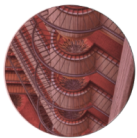
Sensation & Perception
- Explore how human senses (vision, hearing, smell, taste, etc.) influence architectural experiences.
- Design spaces that optimize sensory stimuli to enhance occupants' well-being and engagement.
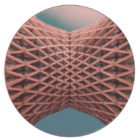
Learning & Memory
- Investigate how architectural design can support effective learning and memory retention.
- Create environments that facilitate information processing, recall, and knowledge acquisition.
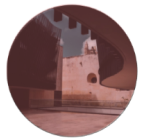
Decision-making
- Examine the impact of architectural elements on decision-making processes.
- Develop designs that promote better decision-making by considering cognitive biases and environmental influences.
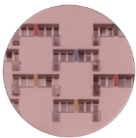
Emotion & Affect
- Analyze the role of architecture in evoking and influencing emotions.
- Design spaces that elicit specific emotional responses, enhance mood, and promote well-being.
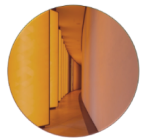
Movement
- Explore the relationship between architecture and human movement and navigation.
- Create environments that facilitate intuitive wayfinding, physical activity, and interaction with the built environment

For detailed information, Submission Parameters & Requirement, and Judging Criteria: View Brief in PDF
Eligible Applicants
- Graduate or Undergraduate students currently enrolled in a college or university architecture program
- Graduate or Undergraduate Interior Design Students enrolled in college or university programs
- Graduate and Undergraduate Neuroscience students interested in architecture.
- Students from Extension Programs associated with Architecture Interior Design or Neuroscience programs
If there are students associated with college or university level programs not listed above who are interested in participating, please contact the competition working group at [email protected]
Schedule
| Launch the Competition, release of formal Brief. Registration Opens. | January 1, 2024 |
| Registration Closes | Extended! |
| Questions Due | February 15, 2024 |
| Q&A Responses Returned | March 1-31, 2024 |
| Entry Submissions | June 15, 2024 |
| Announce the Winners | July 2024 |
How to participate
Individuals or groups can participate. In either case, each person must pay the registration fee of $15, which is not refundable.
FAQs
Please contact the ANFA Educational Committee Competition working group if you have any questions: [email protected].